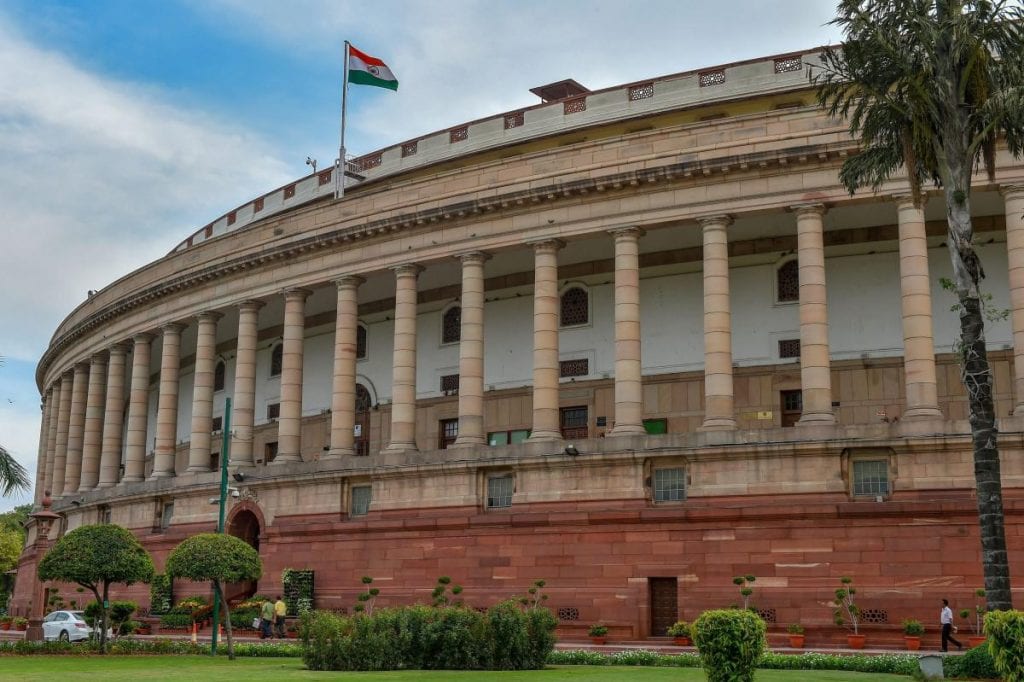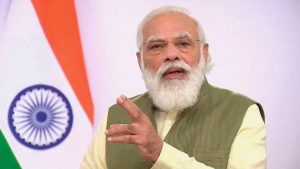
India's vaccine woes could end with compulsory licensing
With the COVID vaccine supply shortages adversely affecting a large majority of countries, augmenting vaccine production, especially in developing countries that have proven production capabilities, has become extremely imperative. However, one of the major bottlenecks in realising this objective is the access to vaccine technologies.

It is extremely important to augment vaccine production, especially in developing countries with proven capabilities, as its shortage is adversely affecting a large majority of countries.
However, one of the major bottlenecks in realising this objective is access to vaccine technologies.
Many of these are currently under patent protection and companies like Pfizer Inc. owning the patents, have tried to drive a hard bargain for their technologies with potential users. In order to obviate this problem, India and South Africa had tabled a proposal in the World Trade Organisation (WTO) to ensure “unimpeded, timely and secure access to quality, safe, efficacious and affordable health products and technologies for all, for a rapid and effective response to the COVID-19 pandemic”.
This proposal, which was tabled in October 2020, is currently co-sponsored by 61 other WTO members.
The proponents have sought temporary waivers from the obligations of the Agreement on Trade-Related Aspects of Intellectual Property Rights (TRIPS) in respect of patents and three other forms of intellectual property rights (IPRs), namely, industrial designs, copyrights, and trade secrets, on medicines, vaccines, and other products necessary for treatment or containment of COVID-19.
Waiver of IPRs, they argued, was necessary to facilitate increased production of these products, leading to easing of the shortages. However, the decision on the waiver proposal would have to wait until WTO members conclude the so-called “text-based negotiations”, which is likely to commence after the second half of July 2021. If they do agree to the waiver proposal, it would be the second time that the WTO members would be acting to address a global public health crisis. [In text-based negotiations, discussions move up around draft texts circulated].
Also read: Patent monopoly over COVID vaccines is a cruel business
Two decades ago, WTO members had adopted the landmark Doha Declaration on the TRIPS Agreement and Public Health, which had emphasised that the TRIPS Agreement should be “supportive of WTO Members’ right to protect public health and, in particular, to promote access to medicines for all”.
The Doha Declaration had endorsed a long-held view of the developing countries that public health concerns must be addressed without the encumbrances of IPRs, thus allowing the fullest use of flexibilities in the TRIPS Agreement. Most importantly, WTO members were allowed the use of compulsory licensing to surmount the barriers posed by IPRs.
Doha Declaration’s backing to compulsory licensing was important for India, for this instrument has been given a crucial role in several intellectual laws of the country, namely, to provide a better balance between the interests of the intellectual property holder and the public at large. Compulsory licensing provisions play a significant role in the Patents Act, for they can be used to ensure access to patented medicines and other prophylactic products at affordable prices in India.

Unfortunately, granting of compulsory licences has recently become the subject of an unseemly controversy after the NITI Aayog raised questions regarding its utility. Commenting on the need for the government to invoke the provisions of compulsory licensing included in the Patents Act, the NITI Aayog opined that “[C]ompulsory Licensing is not a very attractive option since it is not the ‘formula’ that matters …”
This view of the NITI Aayog is flawed on two grounds. First, it stems from an incomplete reading of India’s Patents Act, which, as amended in 2002, had strengthened the compulsory licensing provisions, especially the “General principles applicable to working of patented inventions” through the grant of compulsory licences.
Two provisions merit attention in this regard. Section 83(c) of the Patents Act states, “that the protection and enforcement of patent rights contribute to the promotion of technological innovation and to the transfer and dissemination of technology, to the mutual advantage of producers and users of technological knowledge…”
Further, Section 83(f) stipulates that the patentee should not “resort to practices which unreasonably restrain trade or adversely affect the international transfer of technology”. During the discussions in the Parliament on this amendment, the then Commerce Minister, Murasoli Maran had pointed out that these provisions “should help our technology transfer”.
Secondly, the NITI Aayog has taken a view completely at variance with the strong support the government of India has consistently lent to this instrument in every forum in which the issue of patent protection has been discussed.
India’s position is based on the understanding that compulsory licensing is essential for restraining the patent holders from excessively using their monopoly rights, usually to the detriment of public welfare. When the patented products are essential medicines, and the exercise of patent monopoly can restrict their production, resulting in a steep increase in prices, the consequences can be catastrophic.
But it was not India alone that recognised the importance of compulsory licensing. Since at least the mid-19th century, lawmakers in Europe have considered granting compulsory licences.
Also read: India needs more than patent waivers to deliver more COVID vaccines
Significance of compulsory licensing
The significance of compulsory licensing has repeatedly been emphasised ever since the international patent system began taking its roots with the adoption of the Paris Convention for the Protection of Industrial Property in 1883. One of the constant sources of tension observed in the functioning of the international patent regime, from the adoption of the Paris Convention and the more recent Agreement on Trade Related Aspects of Intellectual Property Rights (TRIPS), has been the patents rights granted to the foreign patentees.

The Paris Convention provided the legal framework to “safeguard of the rights of inventors” from a contracting party in the jurisdictions of any other contracting party, while subjecting them to the “formalities and conditions imposed upon subjects or citizens by the domestic legislation of each State”. The Paris Convention also stated that patent holders “shall be subject to the obligation of working his patent conformably to the laws of the country into which he has introduced the patented articles”. Thus, the patentee had the obligation to “work”, or in other words, to commercially exploit, the proprietary technology in the country granting the patent rights.
Although the Paris Convention provided for “compulsory working” of patents, few countries had introduced relatively softer compulsory licensing provisions in patent laws. Prominent among them was the United Kingdom, which introduced compulsory licensing in its Patents, Designs, and Trade Marks Act of 1883. Grant of compulsory licences was allowed, if the patent was not worked in the United Kingdom, or the reasonable requirements of the public with respect to the invention were not met.
The issue of compulsory licensing gained currency at the beginning of the 20th century primarily as major economic powers tried to overcome inter se technological gaps. The United Kingdom strengthened its compulsory licensing system in order to prevent its industries from falling behind those from Germany and the United States.
Further, patents that were not “worked” within three years of their grant, could be revoked since this was considered as “abuse of monopoly”. These provisions received support at the global level, as subsequent amendments to the Paris Convention, the Washington Act of 1911 and the Hague Act of 1925, recognised that non-working of a patent was tantamount to abuse of monopoly, and that compulsory licences could be issued as a remedy, three years after the patent was granted. Additionally, if compulsory licences were “not suffice to prevent such abuses”, patents could be revoked.
Also read: India’s failure on the vaccine front, and what needs to be done now
A 1943 commentary by William Bennett on the American Patent System provides a cogent justification for the use of compulsory licensing. Bennet explained that “[W]hen inventors take out patents in several countries of the world, those patents establish a monopoly over the inventions in the various countries. By taking out patents only in the industrial countries it is usually possible to stop the competition at its source… In this way, patents can be used to establish protected foreign markets. Others can neither produce nor sell the invention in the foreign countries without the patentee’s permission”.
The principles on which the global patent regime was shaped remained unchanged until the 1980s. It was then that the developed countries began pushing for wholesale changes in the economic governance structure, with a view to enforcing pro-market orthodoxies. The patent regime, a critical cog in determining the technological trajectories of nations, was one of the key targets for the changes to be rung in. The target in this regard was, among others, the instrument of compulsory licensing, which was seen as a hindrance to the exercise of unbridled influence by the large corporations.
Vicissitudes of the compulsory licensing system since the 1980s
Two processes undermined the effectiveness of the compulsory licensing system. The first was the process of revision of the Paris Convention, considered in the Diplomatic Conferences in the first half of the 1980s. The second was the negotiations for the adoption of the TRIPS Agreement under the multilateral trading system that commenced in 1987.
In the Diplomatic Conferences on the revision of the Paris Convention held in the early-1980s, developed countries sought dilution of the “working” requirements, since their efforts were centred on the strengthening of the patentee’s rights. These countries argued that conditions for commercial exploitation of patents do not exist in most developing countries and that “working” of patents in such countries were detrimental to the commercial interests of the patentees. Interestingly, Bill Gates advanced a similar argument in April this year, arguing that vaccine production cannot be moved to factories from the United States to India because the regulatory standards in the latter are not adequate.

The TRIPS Agreement took a giant step towards undermining the compulsory licensing provisions. The most significant change was that the term “working of patent” was replaced by the expression “Other Use Without Authorisation of the Right Holder” (Article 31), indicating the dilution in the powers of the governments to ensure that the patentee “worked” the patent in the country granting the rights. Moreover, the term “compulsory licence” was dropped from the Agreement.
Further, in contrast to the Paris Convention, which allowed grant of compulsory licence three years after the grant of a patent, the TRIPS Agreement requires that the proposed user of a patent must make efforts “to obtain a licence from the [patent] holder on reasonable commercial terms and also for “a reasonable period of time” (emphasis added). Only upon fulfilment of this requirement can a licence for producing a patent product can be issued.
If the TRIPS Agreement had seriously eroded the ability of the governments to issue compulsory licences, the Doha Declaration on TRIPS and Public Health enabled them to issue such licences in the area of pharmaceuticals. Adopted in the wake of the HIV-AIDS pandemic, the Declaration was aimed at resolving the issues that could arise, on the one hand, from implementation of the TRIPS Agreement by the developing and the least developing countries and their public health imperatives, on the other.
The Doha Declaration included two vital elements enabling developing and least developed countries to adopt public health friendly patent regimes. First, it gave due recognition to the entire gamut of “public health problems afflicting … developing and least-developed countries, especially those resulting from HIV/AIDS, tuberculosis, malaria and other epidemics”. Secondly, the Declaration underlined “the need for the WTO Agreement on TRIPS to be part of the wider national and international action” to address the public health problems.
Importantly, it emphasised that “TRIPS Agreement does not and should not prevent members from taking measures to protect public health” and that “the Agreement can and should be interpreted and implemented in a manner supportive of WTO Members’ right to protect public health and, in particular, to promote access to medicines for all”.
Also read:When it comes to COVID vaccines, Indians need broader choice
The Declaration included three crucial guidelines for implementing the TRIPS Agreement. First, it “reaffirmed the right of WTO Members to use to the full, the flexibilities available in the TRIPS Agreement” to protect public health.
Secondly, members have the right to grant compulsory licences and the freedom to determine the grounds upon which such licences are granted”. This meant that any WTO member can grant compulsory licences to ensure local working of a patent, if its holder was unwilling to do so within a period provided for in the statute of that member. And, finally, every WTO Member was given right to determine what constitutes “a national emergency or other circumstances of extreme urgency …”
Additionally, the Declaration stated that “public health crises, including those relating to HIV/AIDS, tuberculosis, malaria, and other epidemics, can represent a national emergency or other circumstances of extreme urgency.”
The Doha Declaration was a major milestone in the efforts that developing countries led by India, Brazil and South Africa has made to ensure that the TRIPS Agreement enabled governments to adopt flexibilities in their patent regimes for meeting public health imperatives. The most significant contribution of the Declaration was the clarity it provided in respect of the adoption of a compulsory licensing system by WTO members. Importantly, this clarification came at a time when most developing countries were in the process of amending their patent laws to make it TRIPS-compliant.
India’s Patents Act, which was amended almost coinciding with the adoption of the Doha Declaration, included several far-reaching provisions in its compulsory licensing system that are tailor-made for use in these times of COVID-pandemic. The shortages of vaccines and medicines such as Remdesivir and Tocilizumab that the country is facing at this juncture, can easily be ameliorated if the government decides to invoke two provisions of the country’s Patents Act, which the Parliament had included to address public health emergencies.
India’s robust compulsory licensing system
The second amendment of the Patents Act was undertaken in 2001 after the Patent Amendment Bill was deliberated on by a joint committee of the two Houses of Parliament. Through this amendment, several substantive amendments were introduced in India’s Patents Act that fully reflected the spirit of the Doha Declaration in terms of addressing public health concerns.
A key set of amendments were made in the compulsory licensing system through the inclusion of two important instruments, namely, special compulsory licences (Section 92) and government use of inventions (Section 100). These provisions were in addition to the provisions relating to the “working of patents” and the grant of compulsory licences, in keeping with the relevant provisions of the Paris Convention, as was discussed above.

The highlight of this set of amendments was Section 83, “General principles applicable to working of patented inventions”, which we had alluded to earlier. At the present juncture, the policymakers would do well to take note of three substantive provisions of this Section: (i) patents are granted to encourage inventions and to secure that the inventions are worked in India on a commercial scale and to the fullest extent that is reasonably practicable without undue delay; (ii) patents are not granted merely to enable patentees to enjoy a monopoly for the importation of the patented article, and (iii) patents granted should not impede protection of public health and nutrition and should act as an instrument to promote public interest especially in sectors of vital importance for socio-economic and technological development of India.
Also read: Clearance bottlenecks block new COVID vaccines that can help ease shortage
This provision also made it clear that patents granted “do not in any way prohibit Central Government in taking measures to protect public health”.
Under normal circumstances, compulsory licences can be granted in India after three years from the date of the grant of a patent, subject to the following conditions: (i) reasonable requirements of the public with respect to the patented invention have not been satisfied; (ii) patented invention is not available to the public at an affordable price; and (iii) the patent is not “worked” in India. But it was the farsightedness of India’s lawmakers that made them include two critical provisions, appropriate for use during the pandemic.
Section 92 allows the Centre to issue compulsory licences any time after the grant of a patent “in circumstances of national emergency or in circumstances of extreme urgency”. The Controller of Patents is authorised to grant a licence to any person interested in producing the patented product and on such terms and conditions as the Controller deems fit. The provision of Section 92 can be applied in case of “public health crises … or other epidemics”. No one, including India’s lawmakers, could anticipate a pandemic such as COVID-19; the worst-case scenario for invoking this Section, according to them, was, therefore ‘epidemics.’
Section 100 enables the Centre, or any person authorised by it, to use the invention “at any time after an application for a patent has been filed at the patent office or a patent has been granted”. In other words, if a vaccine or medicine has been granted a patent in India, or an application for the grant of a patent in India has been made, the government can authorise anyone to produce such product in the country.
During the discussions on the Patent Amendment Bill in the Parliament, the then commerce and industry minister, Murasoli Maran, had explained that the government can use this provision “only in the interest of public health system. They can procure [patented medicines] and sell [them] to hospitals or they can give it to third parties” for producing in the country.
Recently, the Supreme Court of India “outlined the legal framework within which the Central Government can possibly consider compulsory licensing and government acquisition of patents (Sections 92 and 100) and observed that the government was free to choose any other course of action it deemed fit to tackle the issue of vaccine requirements in an equitable and expedient manner, which may involve negotiations with domestic and foreign producers of vaccines”.
However, in its subsequent affidavit before the SC, the government had expressed its reluctance to “exercise of statutory powers either under the patents act 1970 read with TRIPS Agreement and Doha Declaration … can only prove to be counter-productive at this stage” since the “central government is very actively engaging itself with global organisations at a diplomatic level to find out a solution in the best possible interest of India”.
Government’s unfounded apprehensions
The government’s apprehension regarding the adverse consequences of issuing compulsory licences, together with the NITI Aayog view of negating the utility of this instrument, seems unfounded on two substantive grounds. The first is that when the country faces the urgent need to increase production of vaccines and medicines, it must use the flexibilities in the Patents Act, especially the above-mentioned provisions on compulsory licensing to facilitate increase in domestic production of COVID vaccines, and also medicines when they are available.
The architects of the Patents Act had included these provisions in order that the country can respond to “epidemics”. In these pandemic-stricken times, the government needs to invoke to powers given by the Indian Parliament to grant compulsory licences, which can ensure affordable access to COVID vaccines and medicines.

Consequently, these provisions were used only after when an American company charged nearly ₹3 lakhs for a month’s supply of anti-cancer medicine. The government’s grant of a compulsory licence to a domestic manufacturer helped in reducing the price of the medicine to below ₹9,000. The benefits of granting compulsory licences are thus clear and demonstrable.
The second important development that the government needs to take into consideration is that when countries around the world are faced with a public health crisis of this magnitude, developed countries, which have been against granting compulsory licences in the past are not likely to mount a major opposition. This looks a distinct possibility after the US, the most strident opponent of the compulsory licensing system, completely changed its position.
In its recently unveiled Special 301 Report, the annual review of the state of intellectual property protection and enforcement in US trading partners, the Biden-Harris administration has stated that it “respects its trading partners’ rights to grant compulsory licenses in a manner consistent with the provisions of the TRIPS Agreement and the Doha Declaration”.
This is the first time since the adoption of the Doha Declaration that an American administration has lent its support to the use of a compulsory licensing system by its partner countries. When there are incontrovertible reasons for granting compulsory licences and also when global sentiments towards this instrument have changed, should the government of India still remain reluctant to use it?
(Biswajit Dhar teaches at the Centre for Economic Studies and Planning at Jawaharlal Nehru University, New Delhi).
(The Federal seeks to present views and opinions from all sides of the spectrum. The information, ideas or opinions in the articles are of the author and do not reflect the views of The Federal.)


